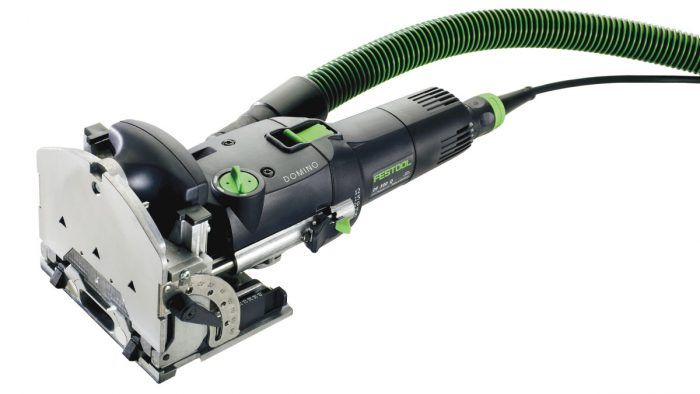Festool’s Domino: Worth the Dough?
The hefty pricetag of this small power tool is justified by its utility.

Festool’s Domino has been available in the U.S. since 2007, and I’ve been using my DF 500 Domino for about 15 years. The tool alone costs $1100, not including an assortment of Domino loose tenons you’ll need. There’s also a larger Domino model, the XL ($1600), but the DF 500 is better suited for cabinetmaking and finish-carpentry tasks.
If you haven’t used a Domino, it’s logical to question the utility of a small power tool that costs more than you’d pay for a portable tablesaw, a circular saw, and a kit of cordless tools combined. But once you’ve completed a few projects with the tool, this skepticism will start to disappear.
Like a biscuit joiner, the Domino has a fence with height and angle adjustments. But the plunge-cutting action is entirely different. Instead of creating a shallow, curved slot like a biscuit joiner, the Domino produces precisely sized mortises using spiral-fluted bits. Compared to other joinery options (pocket screws, dowels, biscuits), the Domino offers more options for joint size. Four different cutters (along with corresponding loose tenons) allow for joint sizes that are difficult or impossible using other methods. And don’t let the term “loose-tenon joinery” fool you; mortise depth, combined with a snug fit, make for stronger joints than you’ll get with biscuits, screws, or dowels. One of the Domino’s most useful distinctions is the flexibility you have in tweaking joint alignment during assembly. By adjusting the tool to make a slightly oversized mortise, you can apply glue, join the parts, and tap them into perfect alignment.
In addition to relying on the Domino for constructing casework, face frames, and doors of all sizes, I’ve used the tool for assembling wood handrails and joining boards together to make tabletops. The Domino enables me to add breadboard ends on wide wood panels and join table legs to aprons. Festool has added even more versatility to the Domino, with accessories for mortising narrow stock and a system of knock-down connectors that make it easy to construct large assemblies without an assortment of oversized clamps. Spend the money. You’ll be glad you did.
Tim Snyder, a woodworker in Newtown, Conn.
From Fine Homebuilding #310
RELATED STORIES






View Comments
As a custom cabinetmaker, I love the Festool Domino, for all the reasons described. My only complaint is with the height lock on the fence. After several years of use, we found that no matter how tightly the knob was screwed down, the fence would creep up, ruining the alignment of the joint. We finally solved the issue by folding a small piece of sandpaper between the locking jaw and the fence. Having abrasive facing both surfaces seems to provide enough grip to prevent slippage.